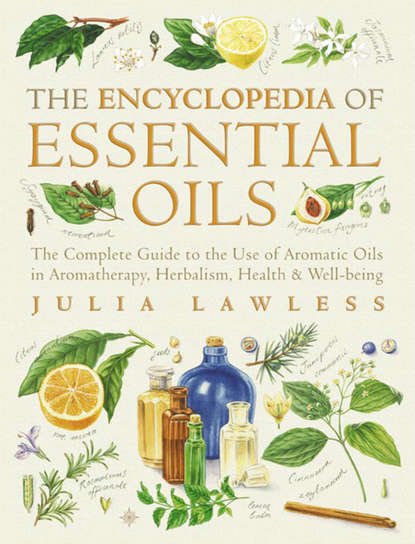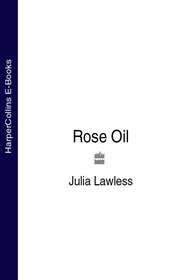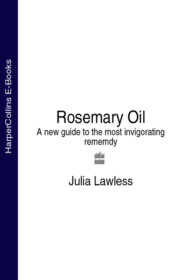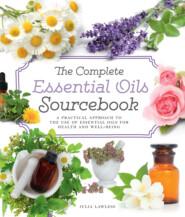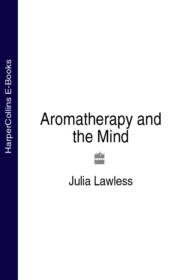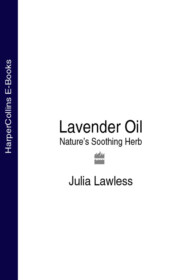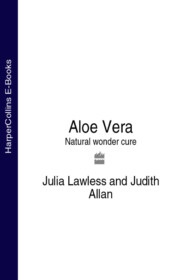По всем вопросам обращайтесь на: info@litportal.ru
(©) 2003-2024.
✖
Encyclopedia of Essential Oils: The complete guide to the use of aromatic oils in aromatherapy, herbalism, health and well-being.
Настройки чтения
Размер шрифта
Высота строк
Поля
BALSAM, COPAIBA (#ulink_3d42a487-7e6e-535c-987f-464514e67b96)
Copaifera officinalis
FAMILY Fabaceae (Leguminosae)
SYNONYMS Copahu balsam, copaiba, copaiva, Jesuit’s balsam, Maracaibo balsam, para balsam.
GENERAL DESCRIPTION Wild-growing tropical tree up to 18 metres high, with thick foliage and many branches. The natural oleoresin occurs as a physiological product from various Copaifera species. Not a ‘true’ balsam.
DISTRIBUTION Native to north east and central South America. Mainly produced in Brazil; also Venezuela, Guyana, Surinam and Colombia.
OTHER SPECIES Several Copaifera speices yield an oleoresin: the Venezuelan type ‘Maracaibo balsam’ has a low oil content, the Brazilian type ‘para balsam’ has a high oil content. See also Botanical Classification (#litres_trial_promo) section.
HERBAL/FOLK TRADITION Used for centuries in Europe in the treatment of chronic cystitis and bronchitis; also for treating piles, chronic diarrhoea and intestinal problems.
ACTIONS Batericidal, balsamic, disinfectant, diuretic, expectorant, stimulant.
EXTRACTION 1. The crude balsam is collected by drilling holes into the tree trunks; it is one of the most plentiful naturally occurring perfume materials. 2. An essential oil is obtained by dry distillation from the crude balsam. It is mainly the ‘para balsams’ with a high oil content (60–80 per cent), which are used for distillation.
CHARACTERISTICS 1. The crude balsam is a viscous, yellowy-brown or greenish-grey liquid which hardens upon exposure to air with a mild, woody, slightly spicy odour. It blends well with styrax, amyris, lavandin, cedarwood, lavender, oakmoss, woods and spices. 2. The oil is a pale yellow or greenish mobile liquid with a mild, sweet, balsamic-peppery odour. It blends well with cananga, ylang ylang, vanilla, jasmine, violet and other florals.
PRINCIPAL CONSTITUENTS Mainly caryophyllene.
SAFETY DATA Relatively non-toxic, non-irritant, possible sensitization. Large doses cause vomiting and diarrhoea.
AROMATHERAPY/HOME USE DIGESTIVE SYSTEM: Intestinal infections, piles.
Respiratory System: Bronchitis, chills, colds, coughs, etc.
Genito-Rinary System: Cystitis.
Nervous System: Stress-related conditons.
OTHER USES The oleoresin is used in pharmaceutical products especially cough medicines and iuretics. The oil and crude balsam are extensively used as a fixative and fragrance component in all types of perfumes, soaps, cosmetics and detergents. The crude is also used in porcelain painting.
BALSAM, PERU (#ulink_ce18a524-4224-5bcc-815b-78e481da26b3)
Myroxylon balsamum var. pereirae
FAMILY Fabaceae (Leguminosae)
SYNONYMSToluifera pereira, Myrosperum pereira, Myroxylon pereirae, Peruvian balsam, Indian balsam, black balsam.
GENERAL DESCRIPTION A large tropical tree up to 25 metres high, with a straight smooth trunk, beautiful foliage and very fragrant flowers. Every part of the tree contains a reinous juice, including the fibrous fruit. The balsam is a pathological product, obtained from the exposed lacerated wood, after strips of the bark have been removed. It is a ‘true’ balsam, which is collected in the form of a dark brown or amber semi-solid mass.
DISTRIBUTION Native to Central America; production mainly takes place in San Salvador.
OTHER SPECIESMyroxylon frutescens and guina-guina are close relations, as well as Tolu balsam.
HERBAL/FOLK TRADITION It stimulates the heart, increases blood pressure, and lessens mucous secretions; useful for respiratory disorders such as asthma, chronic coughs and bronchitis. Traditionally employed for rheumatic pain and skin problems including scabies, nappy rash, bedsores, prurigo, eczema, sore nipples and wounds; it also destroys the itch acarus and its eggs.
ACTIONS Anti-inflammatory, antiseptic, balsamic, expectorant, parasiticide, stimulant; promotes the growth of epithelial cells.
EXTRACTION A resin-free essential oil is produced from the crude balsam by high vacuum dry distillation. (A wood oil is also produced by steam distillation from the wood chippings, which is considered of inferior quality. A white balsam called ‘myroxocarpin’ is made from the fruit, and an extract called ‘balsamito’ from the young fruit.)
CHARACTERISTICS The oil is a pale amber or brown viscous liquid with a rich, sweet, balsamic, ‘vanilla-like’ scent. It blends well with ylang ylang, patchouli, petitgrain, sandalwood, rose, spices, floral and oriental bases.
PRINCIPAL CONSTITUENTS Benzoic and cinnamic acid esters such as benzyl benzoate, benzyl cinnamate and cinnamyl cinnamate as well as other traces. The crude balsam contains approximately 50–64 per cent oil, referred to as ‘cinnamein’, and 20–28 per cent resin.
SAFETY DATA Non-toxic, non-irritant; however the balsam (not the oil) is a common contact allergen, which may cause dermatitis. Those who have this sensitivity may also react to benzoin resinoid; this is called ‘cross-sensitization’. The commercial oil is often a water-white liquid, being diluted with a solvent such as benzyl alcohol.
AROMATHERAPY/HOME USE
Skin Care: Dry and chapped skin, eczema, rashes, sores and wounds.
Circulation, Muscles And Joints: Low blood pressure, rheumatism.
Respiratory System: Asthma, bronchitis, coughs.
Immune System: Colds.
Nervous System: Nervous tension, stress; like other balsams it has a warming, opening, comforting quality.
OTHER USES The balsam is extensively used in tropical medicinal preparations, and to some extent in pharmaceutical products, for example, cough syrup. Used as a fixative and fragrance component in soaps, detergents, creams, lotions and perfumes; the oil is often used in perfumery since this avoids any resin deposits or discolouration; used in most food categories, including alcoholic and soft drinks.
BALSAM, TOLU (#ulink_78c66e89-dbfb-58df-aa72-ab13093cbd8a)
Myroxylon balsamum var. balsamum
FAMILY Fabaceae (Leguminosae)
SYNONYMSToluifera balsamum, Balsamum tolutanum, B. americanum, Myrospermum toluiferum, Thomas balsam, resin Tolu, opobalsam.
GENERAL DESCRIPTION A tall, graceful tropical tree, similar in appearance to the Peru balsam tree. The balsam is a pathological product, obtained by making V-shaped incisions into the bark and sap wood, often after the trunk has been beaten and scorched. It is a ‘true’ balsam.
DISTRIBUTION Native to South America, mainly Venezuela, Colombia and Cuba; also cultivated in the West Indies.
OTHER SPECIES There are many types of South American balsam-yielding trees, such as the Peru balsam (#ulink_57fcb415-77a8-5462-ba9f-55cf42d7a743) – see entry.
HERBAL/FOLK TRADITION The balsam works primarily on the respiratory mucous membranes, and is good for chronic catarrh and non-inflammatory chest complaints, laryngitis and croup. It is still used as a flavour and mild expectorant in cough syrups and lozenges. As an ingredient in compound benzoin tincture and similar formulations, it is helpful in the treatment of cracked nipples, lips, cuts, bedsores, etc.
ACTIONS Antitussive, antiseptic, balsamic, expectorant, stimulant.
EXTRACTION The crude balsam is collected from the trees. It appears first in liquid form, then hardens and solidifies into an orange-brown brittle mass. An ‘essential oil’ is obtained from the crude by 1. steam distillation, or 2. dry distillation. (A resinoid and absolute are also produced for use primarily as fixatives.)
CHARACTERISTICS 1. A pale yellow-brown liquid with a sweet-floral scent and peppery undertone. 2. An amber-coloured liquid with a rich balsamic-floral scent, which slowly solidfies on cooling into a crystalline mass. Tolu balsam blends well with mimosa, ylang ylang, sandalwood, labdanum, neroli, patchouli, cedarwood and oriental, spicy and floral bases.
PRINCIPAL CONSTITUENTS The balsam contains approx. 80 per cent resin, 20 per cent oil, with cinnamic and benzoic acids, small amounts of terpenes, and traces of eugenol and vanillin.





